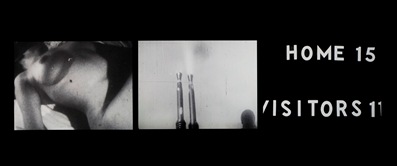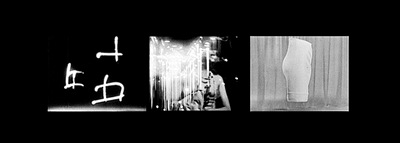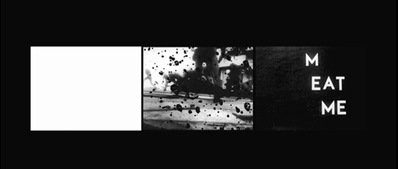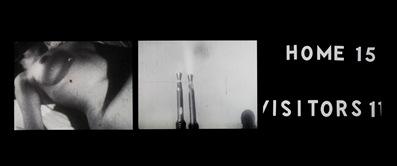Bruce Conner was one of the most important artists of the Beat Generation, a visionary whose work simultaneously epitomizes the aesthetics of his contemporaries and looks forward to the sensibilities of younger generations of artists. Conner’s practice points to a postmodernist sensibility well before its time, using both figurative and abstract vocabularies in a wide variety of media, including not only video and film but also assemblage, collage, drawing, prints, and photographs. Conner’s films are acknowledged to be his most influential legacy, “a new way of imagining visual perception” as groundbreaking as cubist paintings were in the 1910s. Major filmmakers and artists ranging from Dennis Hopper to Christian Marclay have acknowledged the influence of Conner on their own work. Using the collage aesthetic of his work in other media, Conner’s pioneering films combine found footage from a variety of sources (commercial movies, advertisements, government promotional films, etc.) with his own original footage to create social critiques that are simultaneously seductive and scathing. Born in Kansas, Conner moved to San Francisco in 1957; he remained in the Bay Area (with a brief 1961–62 interlude in Mexico) until his death in 2008.

Bruce Conner, Three Screen Ray (still), 1961/2006, no. 4/6, purchased with funds provided by Brad and Colleen Bell, Victoria Jackson and Bill Guthy, Jane and Marc Nathanson, and Steve Tisch through the 2012 Collectors Committee, © Estate of Bruce Conner
Three Screen Ray is based on Conner’s second film, Cosmic Ray of 1961, the first time he combined found footage with footage he shot himself. In 2006 he edited the fast-paced, black-and-white collage that is Cosmic Ray intois a three-channel video projection. The central channel of Three Screen Ray is the 1961 film exactly; the left and right channels are edited versions. Both Cosmic Ray and Three Screen Ray, which has lovingly been called “a cinematic slot machine of disparate images,” are synchronized to a live recording of soul pioneer Ray Charles’s “What’d I Say.” As Conner described it, “I felt that I was…presenting the eyes for Ray Charles …I was supplying his vision.”

Bruce Conner, Three Screen Ray (still), 1961/2006, no. 4/6, purchased with funds provided by Brad and Colleen Bell, Victoria Jackson and Bill Guthy, Jane and Marc Nathanson, and Steve Tisch through the 2012 Collectors Committee, © Estate of Bruce Conner
Three Screen Ray is a funny yet serious social critique juxtaposing hundreds of images ranging from nude women and fighter airplanes to cartoon figures, firing cannons, and Conner’s signature use of commercial film countdown leader. It also includes visual references to non-Western cultures including a many-armed Hindu deity and tribal dancing from an ethnographic film. Conner even tipped his hat to abstract expressionism—at its peak in 1961—by marking and staining the actual celluloid of the original Cosmic Ray with ink and corrosive chemicals so that moments of it look like an action painting akin to Jackson Pollock’s drips.

Bruce Conner, Three Screen Ray (still), 1961/2006, no. 4/6, purchased with funds provided by Brad and Colleen Bell, Victoria Jackson and Bill Guthy, Jane and Marc Nathanson, and Steve Tisch through the 2012 Collectors Committee, © Estate of Bruce Conner
Both Cosmic Ray and Three Screen Ray represent a critical link between early twentieth-centuryavant-garde cinema—particularly theblack-and-white films of Hans Richter and FernandLéger—and music videos, which came to the fore towards the end of the century. Carol S. Eliel, curator, Modern Art



